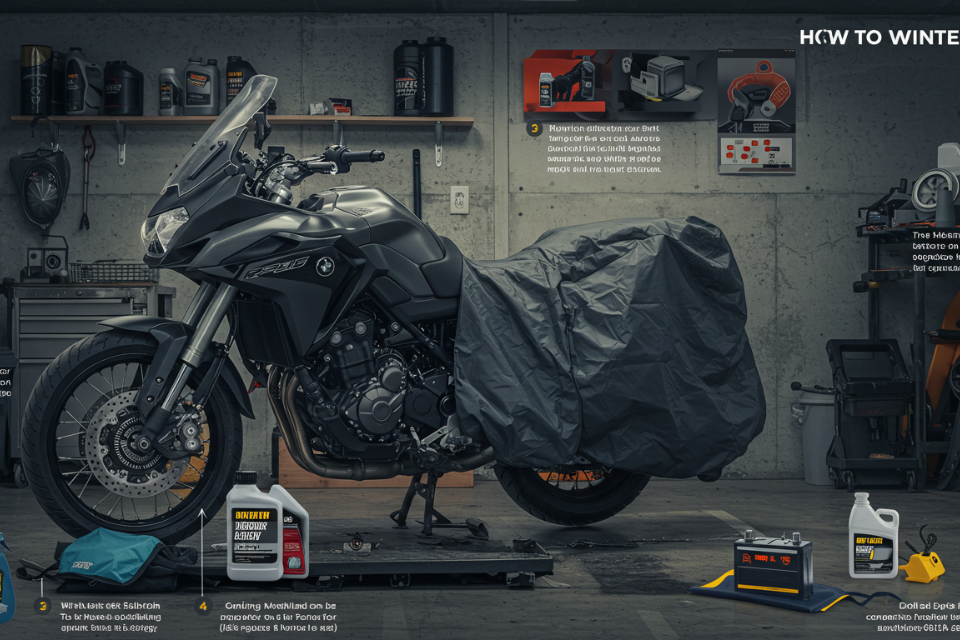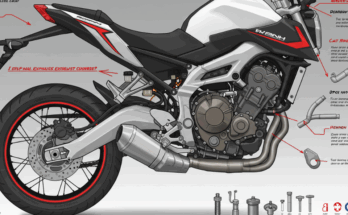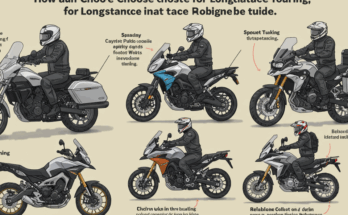Introduction
As the leaves change and the air turns crisp, it’s time to prepare your beloved motorcycle for its winter slumber. Proper winterization protects your investment and ensures a smooth start when spring arrives. This guide provides a comprehensive checklist to help you winterize your motorcycle for storage in 2025.
Cleaning Your Motorcycle
Before storage, give your motorcycle a thorough cleaning. Remove dirt, grime, and road salt that can accelerate corrosion. Pay close attention to hard-to-reach areas. Consider using a high-quality motorcycle cleaner for optimal results. This step is crucial for preventing rust and keeping your bike looking its best.
Fuel Stabilization
Old fuel can gum up your engine’s carburetor or fuel injectors. Add a fuel stabilizer, such as Sta-Bil, to your tank according to package directions. This prevents fuel from degrading over the winter months. Remember to run the engine for a few minutes after adding the stabilizer to ensure proper distribution.
Battery Care
Your motorcycle’s battery is particularly vulnerable during winter storage. The best option is to remove the battery completely and store it in a cool, dry place. Alternatively, you can use a battery tender to maintain its charge. Consult your owner’s manual for specific instructions on your motorcycle’s battery type.

Fluid Checks and Changes
Check and potentially change your engine oil and other fluids (coolant, brake fluid) before storing your motorcycle. Fresh fluids protect against corrosion and ensure your bike is ready to go when spring arrives. Refer to your owner’s manual for recommended service intervals.
Tire Pressure and Storage
Slightly inflate your tires beyond the recommended pressure to help prevent flat-spotting. Consider using a tire cover to protect them from the elements. Storing your motorcycle on a stand is a great way to prevent stress on your tires and suspension. You might want to check out various options for motorcycle stands online.
Protecting Against the Elements
Use a breathable motorcycle cover to shield your machine from dust, moisture, and UV rays. Avoid using plastic covers that can trap moisture and lead to corrosion. Consider storing your bike in a garage or other protected area.
Final Preparations
Before covering your motorcycle, give it one last visual inspection. Make sure everything is properly secured, and you haven’t missed anything. A little preventative maintenance now can save you a lot of hassle later.
Conclusion
By following these steps, you can ensure your motorcycle is well-protected throughout the winter months. Proper winterization will extend the life of your machine and make for a more enjoyable riding experience when spring finally arrives. Remember to always refer to your owner’s manual for specific recommendations for your model.
Frequently Asked Questions
What type of fuel stabilizer should I use? Many reputable brands offer fuel stabilizers. Look for one designed for long-term storage.
How often should I check on my motorcycle during storage? Ideally, check on it monthly to ensure the cover is secure and there are no signs of damage or pests.
Can I leave my motorcycle outside during winter? While possible, it’s best to store your motorcycle in a garage or sheltered area to protect it from the elements.
Do I need to disconnect the battery completely? Disconnecting is recommended for optimal battery protection, but a battery tender is a suitable alternative.
What about the chain or belt? Lubricate and clean your chain or belt before storage to minimize corrosion and ensure smooth operation in the spring.



